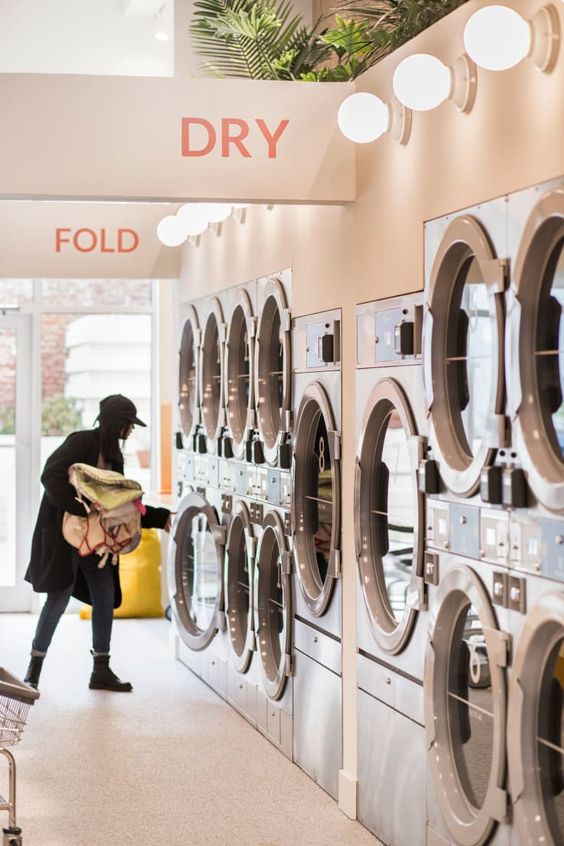Real-world systems, smart workflows, and expert Laundry Room Management
Running a laundry business is more than loading machines and folding towels. Success depends on speed, consistency, and control—and it all begins with smart Laundry Room Management. Whether you’re handling a small residential setup or servicing hundreds of kilos of linen for commercial clients, the right structure determines your bottom line.
The laundry industry in Australia is growing, driven by demand from aged care, gyms, short-stay properties, and residential developments. But growth alone doesn’t guarantee success. Operators who build strong foundations and efficient routines stand out—those who don’t quickly fall behind.
So what sets a successful laundry business apart?
Start With Systems, Not Guesswork
Many new laundry operators start strong but struggle after a few months. Machines break, linen goes missing, and the workload becomes unmanageable. In most cases, it’s not for lack of effort—but lack of process.
Successful businesses create documented systems from day one. That includes:
- Clear pickup and delivery schedules
- Standard operating procedures (SOPs) for washing, drying, and folding
- Equipment maintenance plans
- Inventory tracking
These aren’t just operational details—they’re the building blocks of scalable Laundry Room Management.
Hire for Reliability, Train for Excellence
In this business, your staff are your biggest asset—or your biggest risk. High turnover is common, and without proper training, service quality slips fast.
Winning teams:
- Have a clear chain of command
- Undergo training for hygiene, handling, and machinery
- Work to a schedule that avoids burnout
It also helps to assign someone who owns the laundry room—whether that’s a supervisor or route operator—who can spot issues early and keep daily operations on track.
If you’re managing multiple sites or a mix of in-house and outsourced setups, having a clear Laundry Room Management plan ensures consistency across every location.
Make Your Machines Work Harder—Not Break Faster
A common mistake is running machines non-stop until they fail. Downtime kills productivity and racks up emergency repair costs. Smart laundry operators invest in commercial-grade equipment and set regular maintenance checks.
Your goals should be:
- Avoid unscheduled breakdowns
- Keep energy and water bills predictable
- Extend the lifespan of your machines
Simple steps like checking lint filters, balancing loads, and rotating usage across machines go a long way.
And with tools like smart meters or usage logs, you can spot trends before they become problems.
Turn Your Workflow Into a Profit Engine
Laundry is a volume game. The more linen you process efficiently, the better your margins. That’s where layout and workflow come in.
For example:
- Place sorting tables close to intake
- Set clear zones for clean vs dirty linen
- Use colour-coded bins or tags to track jobs
- Add wheels to baskets to reduce lifting time
In larger setups, use job boards or software to track turnaround times. Whether you handle your own pickup or partner with a route service, keeping the flow tight ensures you stay ahead of client expectations.
You can explore scalable pickup strategies in this detailed guide to Laundry Room Management.
Know Your Market and Adjust Fast
One of the key traits of a successful laundry business is flexibility. Aged care centres need high hygiene standards. Gyms need daily towel turnaround. Airbnb hosts need linen pre-packed and delivered before check-in.
Your processes should reflect your clients’ needs. But more importantly, you should be talking to clients often. What’s working? What’s not? Are there seasonal changes in demand?
Building a reputation as a business that listens—and adapts—builds loyalty and repeat business.
Go Digital Where It Counts
Digital tools don’t replace hands-on experience, but they streamline it.
Some quick wins:
- Use software for route planning and delivery logs
- Set up alerts for machine service intervals
- Track linen with QR codes or barcoding
- Accept payments or bookings online
Even if your business is small, simple tech like Google Sheets or SMS notifications can lift your professionalism and reduce admin time.
For larger setups, more advanced route optimisation software is worth the investment—and essential to scale without service drops.
Control Costs Without Cutting Corners
Utilities are one of the biggest costs in a laundry business. Every extra rinse or half-full dryer load eats into your profits.
Some ways to keep costs lean:
- Wash on cold cycles where possible
- Install low-flow water fittings
- Schedule off-peak energy use
- Choose energy-efficient washers and dryers
According to Sustainability Victoria’s commercial laundry guide, businesses can cut energy usage by up to 30% by upgrading equipment and adjusting wash settings.
Add to that better stock control and fewer re-washes, and your savings add up fast.
Build a Brand, Not Just a Service
Finally, the best laundry businesses think beyond the wash. They build a reputation based on:
- Consistency
- Communication
- Clean, presentable linen every time
From uniforms to delivery vehicles, your business needs to look the part. A well-managed laundry business is invisible when it works well—and unforgettable when it doesn’t. Aim to be the former.
Success doesn’t come from a shiny machine or fancy detergent. It comes from trust. And trust is earned through clean linen delivered on time, every time.
Final Thoughts: Build Systems. Keep Promises.
So, how do you become a successful laundry business? It starts with a solid operational plan, sharp Laundry Room Management, and a willingness to learn on the job. Add discipline, consistency, and a bit of clever thinking, and you’ll not just survive—you’ll thrive.
Whether you’re running a single laundry room or managing multiple properties, the right strategy will keep your business clean, lean, and ready for growth.

